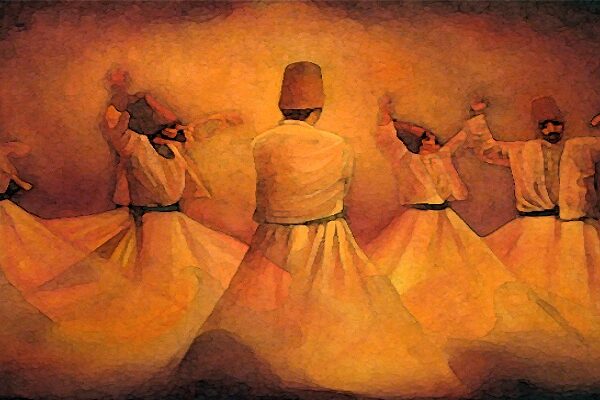Intellectual disagreement and discourse should be encouraged, but hostility towards each other while a greater enemy awaits to hurt us is imprudent and harmful to our communities as a whole.
Intellectual disagreement and discourse should be encouraged, but hostility towards each other while a greater enemy awaits to hurt us is imprudent and harmful to our communities as a whole.
Perhaps one of the leading problems in many Muslim communities is that they are made to believe in a black-and-white monolithic understanding of Islam. A big problem occurs when they are exposed to the wide range of (legitimate) differences historically and contemporarily.
According to a 2014 Pew Poll, 23% of Americans raised Muslim leave the religion by adulthood. A monolithic understanding of Islam may have a significant role in the loss of faith of these Muslims. Although sectarianism is thought to be a rare occurrence in many American Muslim centers, sectarian sentiments still linger in the hearts of many Muslims.
As previously mentioned, 40% of Muslims shared that they have experienced sectarianism, and that’s no negligible number. Intolerance towards other Muslims is draining our time and energy. There is a clear misallocation of resources: instead of addressing the doubts in faith in our Muslim youth with the wide range of legitimate opinions, many resort to using sectarian rhetoric.
Sectarianism is not an intellectual disagreement. Instead, it is marginalization, alienation, and bigotry towards other Muslims from (legitimate) different schools of thought. This could range from excluding minority-school Muslims from Muslim student organizations to declaring other Muslims to be unbelievers (Takfir).
The Amman Message: Efforts to Reject Sectarianism
The 20th and 21st century saw a lot of highs and lows in inter-school Muslim relations and cooperation. The Amman Message was a great effort where reputable scholars from all Muslim countries came together to clearly define what schools of thought are legitimately Muslim. They signed and agreed on three main points: First, they specifically recognized the validity of all 8 Mathhabs (legal schools) of Sunni (Hanafi, Maliki, Shafi’i, Hanbali, and Thahiri), Shi’a (Zaydi and Ja’fari) and Ibadhi Islam. They also recognized Ash’arism, Sufism, and true Salafi thought, and came to a precise definition of who is a Muslim. Second, based upon the definition of Muslims, they forbade Takfir (declarations of apostasy) between Muslims. And third, based upon the Mathahib, they set forth the subjective and objective preconditions for the issuing of fatwas, thereby exposing ignorant and illegitimate edicts in the name of Islam.
The Amman Message was a positive development that accurately presented what the legitimate differences amongst Muslims are. Other significant developments that concluded that Sunnis, Shia, and Ibadis are all Muslims include Al-Azhar’s Fatwa and Al-Sistani’s famous declaration that Sunnis are “not [only] our brothers [in Islam] but ourselves.” These attempts at promoting tolerance and pluralism came from the heart of traditional Islamic scholarship and should be adhered to and revered.
Sectarianism in Islamic History
The attempts at fostering brotherhood are also reminiscent of our history as Muslims, which was, for the most part, is a history of inter-school tolerance. Mecca and Medina under the Sharifs allowed for various schools to practice their jurisprudence freely, as the Sharif family itself eventually was comprised of Sunnis and Shia. Yemen is yet another example of Sunni Shafi’is and Zaydis living together in peace and cooperation. Yemen is unique in that it never developed the notion of a Sunni or Shi’a mosque.
It is well-known that the only way you could tell a Shafi’i from a Zaydi was by the placement of their hands in prayer. Intermarriages between the two schools frequently occurred, among the Zaydi elite and Shafi’i scholars like the Ba’Alawis, as well as among laymen. This is a well-referenced fact: even the famous Yemeni Shafi’i spiritual educator, Al-Habib Ali Al-Jifri, dedicated a speech to explaining the above phenomenon and highlighting that the civil war in Yemen is actually purely political and that sectarianism was previously foreign to Yemeni culture.
The alternative is not pretty. A devastating example of the sectarian downward spiral occurred during the Shafi’i and Hanafi wars, as narrated and recorded in Ibn Abi Hadid’s Sharh Nahjul Balaghah. The people of Isfahan, in 633 AH, were of two groups: the Hanafis and the Shafi’is. They engaged in perpetual wars and displayed conspicuous bigotry (against each other). So, a group of Shafi’is, in an effort to eradicate the Hanafis, went to the Tatar warlords and invited them to enter the city and obliterate the Hanafis. The Tater warlords then began by mass murdering the Shafi’is and enslaving their women, then did the same with the Hanafis.
This is the unfortunate outcome of sectarianism, which cultivates a culture of continuous divisiveness. Even among Sunnis, these divisions found a place to lead one Sunni group to seek to destroy another. The sectarian mentality does not stop by marginalizing people of different sects; it finds ways to divide and pit a man against his brother as soon as they eradicate the proverbial cousin.
Contemporary Examples of Addressing Sectarianism
Today, there are a few Muslim governments and populations who have worked on addressing this problem. Oman is an interesting example of an apolitical country that invests in decreasing sectarianism. Oman is an incredibly diverse country by school of thought. Approximately half of the country is Ibadhi, whereas the other half is Sunni and Shi’i. The various schools do not experience any repression or sectarianism. However, that may be due to the harsh government laws against expressions of sectarianism.
While government intervention can be helpful, community efforts are preferable, and there have been plenty of examples. During the terrorist attacks against Shia Muslims in Pakistan, Pakistani Sunnis made an effort to protect their Shia brethren. These efforts are borne out of the genuine concern and love for Muslim brethren of different Islamic traditions, and these are the sentiments that we should cultivate for a stronger, more united Muslim community. There are many other community efforts worth mentioning, the one mentioned is only an example.
On the other hand, the past century (and particularly the past few decades) witnessed many political conflicts in sectarian garb for the sake of domination and social control. Tyrants throughout history seek the legitimization of the “religious” to secure popular support and to shut down constructive criticism in the name of religion. This is as true in both the east and the west, as “scholars” allying with unjust political powers is as old as the Ummayads.
The same scholars use religious slogans to mobilize brothers in faith against each other when convenient; thus, not only harming individuals but eventually wrecking religion when time unveils their plots. Political hegemony using religion has delegitimized religious institutions which decreases the faith of Muslims. We must recognize the usage of religion to demonize other Muslims so that we are no longer tricked by any tyrant, and so that we are more receptive to calls for discourse, tolerance, and mutual respect. Our current state is not maintainable and will stunt the growth and development of Islam and Muslims in the future.
Where Do We Go from Here?
The sectarian mentality has proven to continue dividing Muslims into smaller and weaker units. We may think it stops at dividing Muslims into Sunni and Shia groups, but it does not stop there. Sunnis will divide to Sufis and Salafis, and so on. If the sectarian mentality is not addressed, then Muslims may become condescending or even belligerent towards those who do not follow his/her Shaykh from their own school. Historically, every school of thought and sect has or may have had faults. What is unnecessary is to engage in fault-finding to present a negative image of school X or Y.
A path forward must be a path of tolerance and pluralism. We can start by encouraging our Muslim organizations (representing Muslims in general), in universities and otherwise, to host events centered around themes and values that unite Muslims from all schools, like remembering the Holy Prophet, the importance of love and justice in Islam, and the plight of Uighur, Kashmiri, Palestinian, and other oppressed Muslim brothers and sisters.
If an organization is hosting an event around Aqeedah or Fiqh, they should be advised to highlight the agreed upon points. After all, crises of faith are usually regarding the nature of God and the Afterlife as well as social issues, and Muslims are united on the content of addressing these issues. Finally, it is important for well-educated Muslims to promote a culture of tolerance towards each other. One way of doing that is engaging in constructive discourse with members of other schools of thoughts, instead of only hosting interfaith events.
Muslims are in a vulnerable state around the world. Many are losing their faith, and others are being targeted by Islamophobes left and right. It is not the right time to create friction and hatred in our society for the sake of Sunnism, Shiism, Sufism, or Salafism. Intellectual disagreement and discourse should be encouraged, but hostility towards each other while a greater enemy awaits to hurt us is imprudent and harmful to our communities as a whole.
The minds can and should clash, but the hearts ought to stay united. Allah reminds us in the Quran: “And hold firmly to the rope of Allah all together and do not become divided. And remember the favor of Allah upon you – when you were enemies and He brought your hearts together and you became, by His favor, brothers…” [Al-‘Imran 103]. Let us truly be brothers in faith and work together for the greater good of our community.





